Building Language Through Thematic Learning
Program Transcript
Catalan (Interview): My name is Eloisa Catalan. I teach preschool, three to five years old, and we're here at Mission Neighborhood Center in San Francisco.
Hawley (Interview): I'm Rebecca Hawley. I'm the developmental early childhood education coach, and a lot of my time is spent with the teachers, coaching them, mentoring them and helping them in their own professional development. In the Mission Center, we work with a very specific dual language learning model, so the one we developed was called the teacher-based model, so we're very intentional about how we place teachers based on their language.
Catalan: So when you grow up Dominic, what do you want to be?
Hawley (Interview): We'll have one very strong english model.
Catalan: He said, I want to be a doctor. Why do you want to be a doctor? Because I want to help people who are sick.
Cuellar: [Spanish]
Hawley (Interview): And one teacher who's very competent, where their primary language is Spanish.
Catalan: What do you want to be when you grow up?
Catalan (Interview): Our lesson plan for this week is all about community helpers. We have themes each week so that they will learn vocabulary.
Catalan: Why do you want to be a teacher?
Student: Because I want to show them how to draw, a cat.
Catalan (Interview): The more we expose the vocabulary, the more they get used to it.
Student: I want to be a mermaid.
Catalan: You want to be a mermaid? Let me see if I have a mermaid right here. Hmmm…
Catalan (Interview): So children participate in two languages. In the morning, English. And in the afternoon, we use Spanish.
Cuellar: What do you want to be when you grow up?
Student: A a baker
Cuellar: What a baker?
Student: Because I like cookies.
Cuellar: Oh, …
Hawley (Interview): It's important for children to hold onto their home language, and build on that as they're incorporating another one.
Cuellar: DeMarco, what do you want to be when you grow up?
Student: Policia!
Hawley: Research shows that if they're very strong in their home language, that acts as a catalyst for learning a second language…Thematic learning is really a way that children can get the experience of a concept woven throughout the day in different areas or what we call different learning centers.
Teacher: What are those? Are those police cars or fire trucks?
Student: Fire trucks.
Catalan (Interview): One of the setups that we use is the collage. By bringing collage in activities, we have different pictures of the community helpers.
Teacher: You can choose any job. What do you want to be when you grow up? You can choose a doctor, a police man. A nurse, scientist. You choose.
Catalan (Interview): And for our dramatic play, we have different kinds of costumes.
Catalan: There you go. Now go! Fire away! Woo woo!
Hawley (Interview): Pretty much in every area of the classroom, there was a theme that was connected to community helpers. It went many different directions depending on the child. It may just be through language development during dramatic play or an arts project, but we incorporate early literacy literally into everything that we do throughout the day.
Teacher: DeMarco, see if you can write your name. Over here, over here, or anywhere that you want to.
DeMarco: D…
Teacher: D…
Hawley (Interview): Our goals for early literacy is not that kids are going to go to kindergarten and reading and that's our expectation. Really, our goals for early literacy is children have a love for book exploration and have the beginnings of the foundations for reading. Children learn in a variety of ways and we consistently want to leave the door open and go with the child's lead. Even if it's something completely different from what we think. You never know. We may learn something from that. They may be right. We could be wrong.
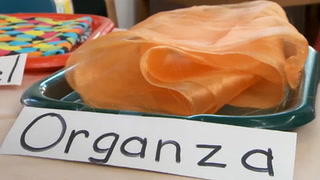
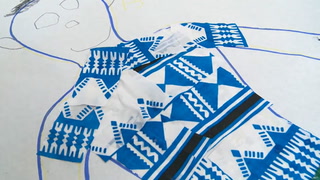


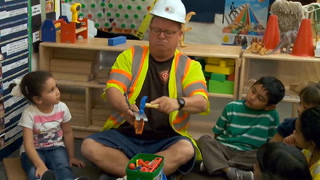

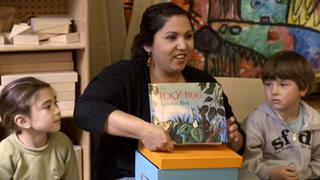

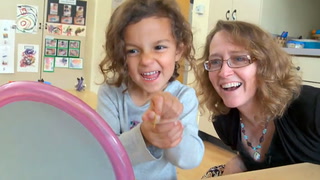
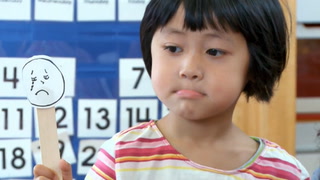








17 Comments
Tobon Lucero Jun 13, 2020 11:17am
This video demonstrates a very efficient way for schools to integrate two languages in the classroom. Integrating Spanish into schools is useful for children if their first language is Spanish. . I like how the two languages are integrating throughout the day; in the morning children learn English and, in the afternoon, they learn Spanish. This video shows how children have the ability to learn in two languages. Teachers have to integrate the learning thematic in their classes. Children enjoy and easily engage with thematic lessons. Furthermore, the same content is taught in both languages. I think these strategies are very helpful.
Esther Nelson Jul 19, 2019 10:11pm
This video shows how teaching in two separate languages is facilitated in an early childhood class. The teacher engages students by asking critical open-ended questions which connect students to the various vocabulary words. As students explain their connections to those vocabulary words they are actively engaged in learning as they expand on their vocabulary skills. In a dual-language class, Students also benefits from the repetition of the demonstration of learning that is interwoven in different activities throughout the day. In this video, the learning goals are reinforced again, later in the day, in student's native language so students can apply the previous lesson and extend it to the language which is more familiar to them. The learning is then implemented through Thematic learning as it is incorporated in the various center activities that connect to a child's learning style such as the puppet shows, clothing props, the tools needs in the job roles, making collages. Consequently, the variety of learning accommodation and modification enhances language development and provides students with a clear understanding of the importance of becoming community helpers in the near future.
Adaeze Ekulide Jun 28, 2019 12:54pm
A teacher based dual language model is used when one teacher instructs children in their native language and another teacher instructs children in english. Each center help students develop understanding of content and knowledge by actively engaging student . Chidren made a collage of community helpers in the art area. In the dramatic area, the teacher supported the children by actively demonstrating what community helpers do.
The benefits of learning similar content in two language is children will understand content in native language as well as english.
Mohinur Yuldasheva Apr 9, 2018 11:33pm
Mohinur Yuldasheva Apr 9, 2018 11:10pm